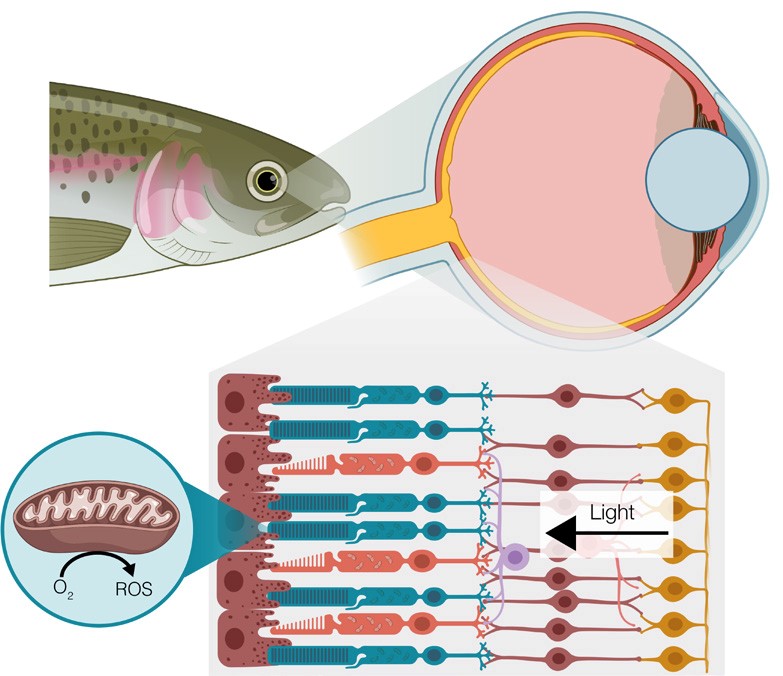Antioxidant defense mechanisms in fishes
Many teleost fishes generate very high oxygen levels in the blood (oxygen secretion) to fill the swim bladder with oxygen at depth and supply oxygen to the retina within the eye. However, high oxygen levels lead to the harmful production of reactive oxygen species, damaging biomolecules and ultimately leading to cell death. In this project, we will explore how fish cope with oxidative stress in the swim bladder and retina by measuring the production rates of reactive oxygen species as well as the capacity for antioxidant defense in these tissues. Further, the project seeks to explore these physiological systems in multiple species of fish to test if the evolutionary origins of oxygen secretion in the swim bladder and retina co-evolved with altered mitochondrial function and antioxidant defense in these tissues.
I look for students for this project at any education level and ECTS (10-60) with a keen interest in molecular physiology. Projects can be modified to accommodate students’ preferences and may involve measurements of:
- Rates of reactive oxygen species in isolated mitochondria using respirometry
- Activity levels of antioxidant proteins using biochemical assays
- Gene expression of antioxidant enzymes using spatial transcriptomics
- Levels of oxidative damages to lipids and proteins
Contact: Christian Damsgaard
Supervisor: Tobias Wang
The project proposal has been submitted 15.06.2024.
